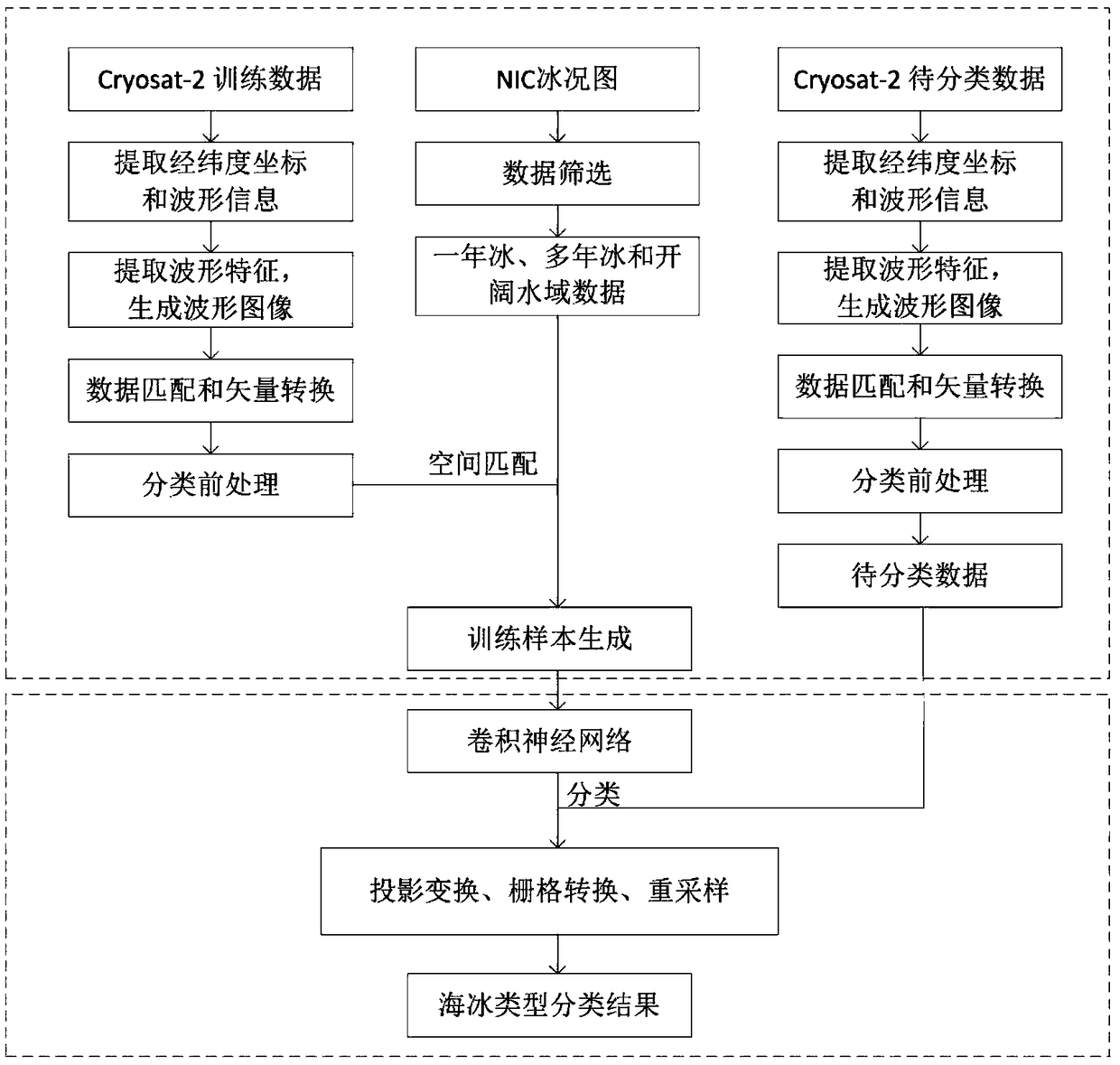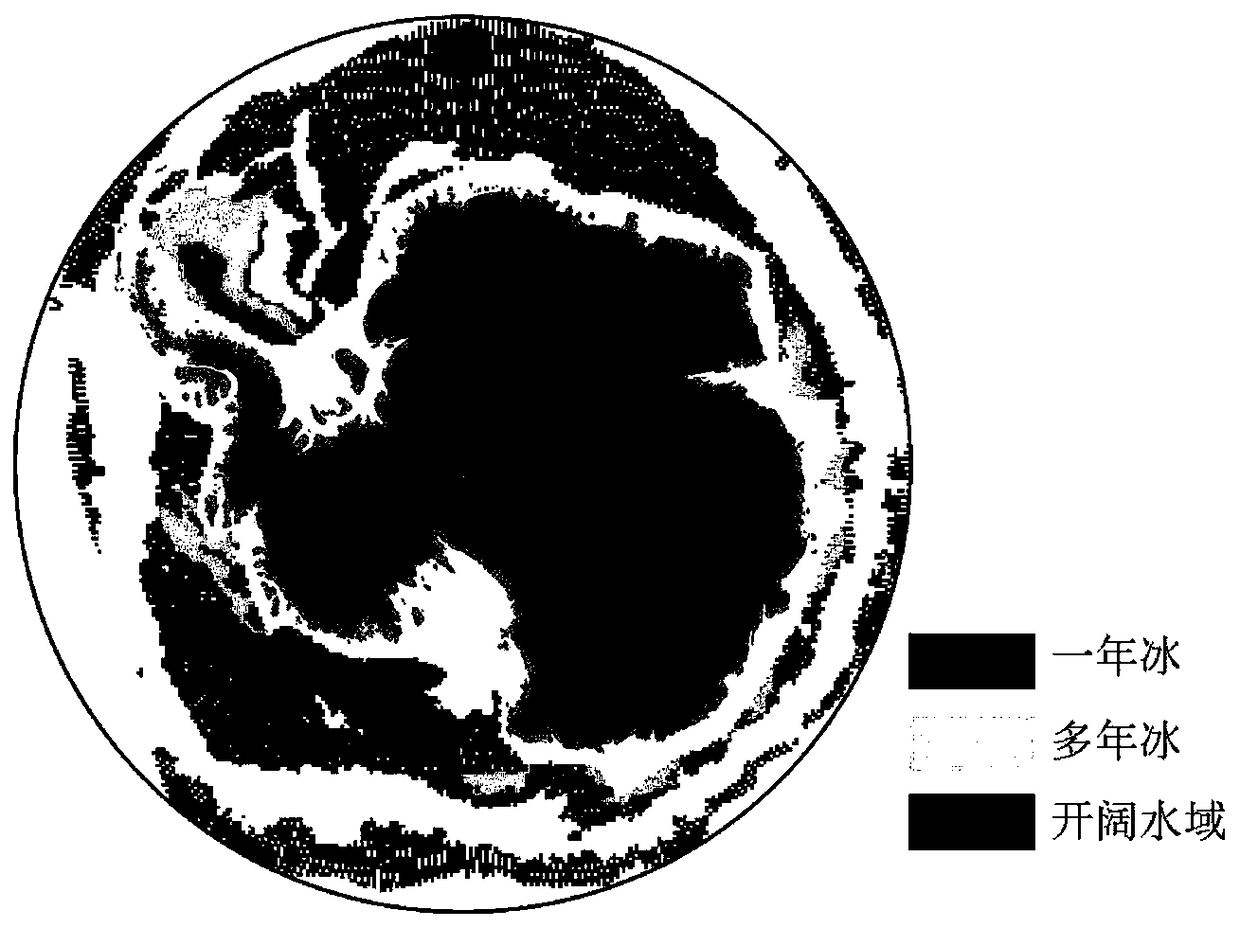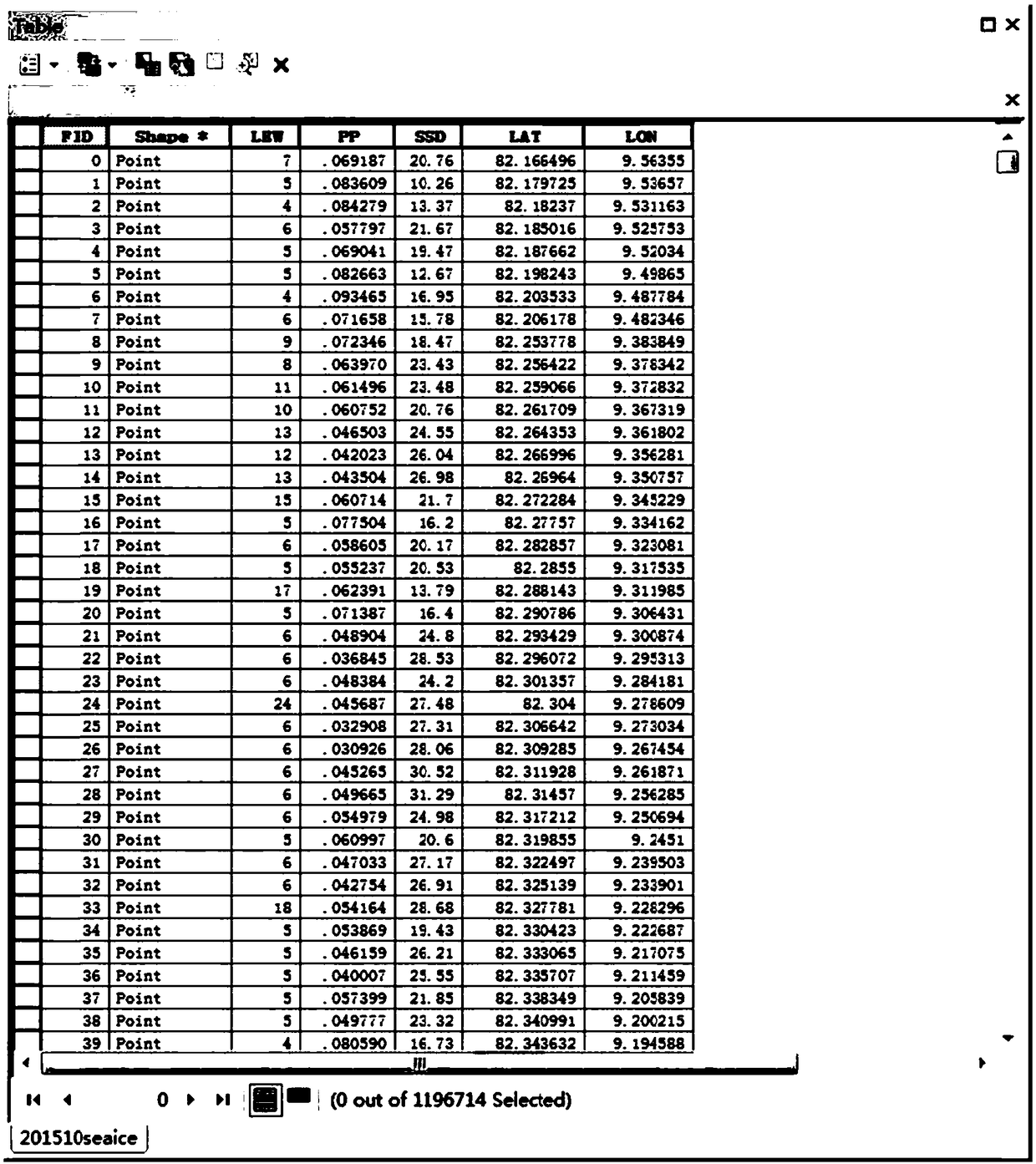A sea ice type remote sensing classification method based on convolution neural network
A technology of convolutional neural network and classification method, applied in instrument, character and pattern recognition, scene recognition, etc., can solve the problems of high cost of SAR image acquisition, difficulty in large-scale sea ice classification, and small spatial coverage of remote sensing images, etc. problem, achieve the effect of simple and easy execution steps, improve classification efficiency, and reduce manual participation
- Summary
- Abstract
- Description
- Claims
- Application Information
AI Technical Summary
Problems solved by technology
Method used
Image
Examples
Embodiment Construction
[0026] The present invention will be described in detail below according to the accompanying drawings, so as to make the technical route and operation steps of the present invention clearer. The data used in the examples of the present invention are the CryoSat-2 satellite L1b level SAR model baseline C data and NIC shapfile format data. The sample data was acquired from September 1, 2017 to September 30, 2017, and the NIC sea ice type data was acquired from September 14, 2017.
[0027] figure 1 It is a flowchart of sea ice remote sensing classification method based on convolutional neural network, and the specific steps are as follows:
[0028] Step 1: Prepare training data and data to be classified, and read information from the data. Specifically, it includes the following aspects:
[0029] a. Download the CryoSat-2 satellite SAR mode L1b level data in a certain period, and obtain sample data (September 1, 2017-September 30, 2017), randomly according to the ratio of trai...
PUM
 Login to View More
Login to View More Abstract
Description
Claims
Application Information
 Login to View More
Login to View More - R&D
- Intellectual Property
- Life Sciences
- Materials
- Tech Scout
- Unparalleled Data Quality
- Higher Quality Content
- 60% Fewer Hallucinations
Browse by: Latest US Patents, China's latest patents, Technical Efficacy Thesaurus, Application Domain, Technology Topic, Popular Technical Reports.
© 2025 PatSnap. All rights reserved.Legal|Privacy policy|Modern Slavery Act Transparency Statement|Sitemap|About US| Contact US: help@patsnap.com



